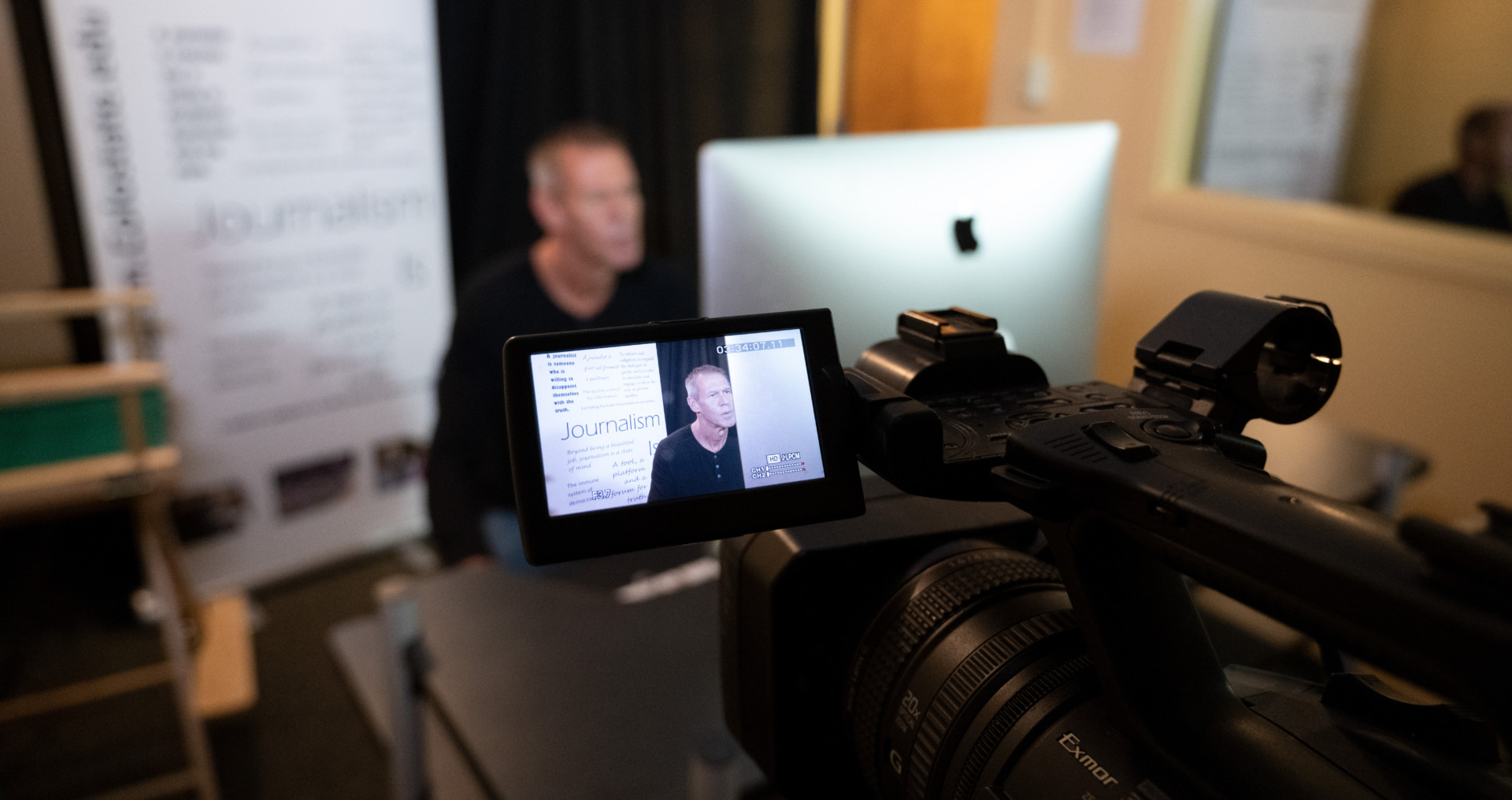Editor’s note: Greg Luft and Steve Weiss of the Department of Journalism and Media Communication put together this advice to provide advice to faculty members who are not accustomed to recording video.
There’s a pandemic, and everyone but a few select family members now want you at home to work. But you still have to communicate. Regular phone conversations are viable, but not stylish. Postal mail, email, social media and express packages can help. But they all have interpersonal and contextual loopholes. This means you will likely be using your computer, a webcam and a microphone.
The good news is that people won’t be able to smell stuff. But wow, it turns out that you can still look like you just fell out of a garbage truck, dropped in from a really bad horror film, or are trying to be a little too intimate for comfort. And, you can sound like you’re in a foreign movie with an indistinguishable language, and no access to subtitles.

But you can fix this. It’s easy if you follow the commandments of webcam aesthetics:
• Figure out where your camera is, and look at it when you are talking. This is harder than it sounds, but give it a go.
• Your camera should be roughly at eye level or just a bit higher. If it’s too low, which is most common, your viewers will know a lot more about what’s inside your nose than they need to know. If it’s too high, they’ll see your receding hairline, thinning hair. But, if it’s just a ‘little’ higher than eye level, it will force you to keep your head up, and reduce that double chin you don’t like.
• Don’t violate someone’s virtual personal space. A distance roughly three feet from your camera will give you a head-and-shoulder shot, and the microphone on your webcam will still work. Anything closer violates that whole psychological theory of personal space.
• Put yourself in the frame with a sense of balanced framing. Think of how you might want to be framed in your high school yearbook photo. Avoid too much headroom, but don’t cut off the top of your head.
• Understand rays of light. You should be facing the primary source of light in your workspace, not trying to illuminate the back of your head. If you’re in an office, your computer screen and your camera probably face the window, which is a bright light source, so close the blinds, or turn your setup 90 degrees. Dark backgrounds are best. Consider raising the general light level of the room (with light in front of your face) with an extra light or two.
• Close the door behind you so your audience can’t see or hear your family and pets doing crazy stuff in the background.
• Be in a quiet place so you can speak at a natural conversational level. Yelling at your computer isn’t cool. If you have headsets with a built-in microphone, there’s a good chance both the headphones and mic will work if you plug into your computer. If you don’t have a microphone, make sure you are close enough and speaking loud enough (but not yelling) for the computer mic to hear you clearly. Whether it feels like it or not, that works with the three-foot rule.




Greg Luft, head of the Department of Journalism and Media Communication, asked faculty members to submit photos of themselves working from home with their pets.
• Don’t worry too much about your makeup, hair, or whether you’ve shaved today. But keep in mind that you might see your meeting mates in person at some time in the future, so you might want to consider what “look” they will remember.
• Don’t pick your nose, eat, chew gum or say stupid stuff that can get you in trouble later. Most software packages enable people to record these conversations, so beware.
• Take advantage of the option to mute your microphone or your camera when you aren’t speaking. It will make it easier to hear everyone else, and it won’t make you seem like a creepy heavy breather, sniffler or snorter.

• Make sure your body is nice and loose even if sitting down, so you don’t look stiff or robotic.
• Don’t let your shoulders tense up … as they raise up, so does your voice.
• Be sure to use your hands to gesture, as it looks friendlier and helps keep you physically relax (don’t overdue this one, as the camera tends to overemphasize body movement).
• Don’t wear clothes, jewelry or accessories that are distracting to viewers. They will find themselves noticing and judging your appearance, as opposed to listening to what you are saying.
• Take some time practicing your presentation before you do it, get familiar with your on-camera lines. If possible, record it, review it and make adjustments before you get to that actual final record session.
• Right before you hit that record button, smile! It helps loosen your face, even if the topic is serious. You can get serious as you start.
• Many of us tend to rush our delivery when we get nervous. And nervousness also makes our voice raise an octave or two. So if that is a problem for you, right before you start, give yourself a mental reminder: “lower and slower.” It generally helps in both cases … and almost all of us sound better with a slightly deeper or lower narration.
• Maintain good eye contact with the camera at all times, because it is very distracting for viewers when you look away. In this case, that camera is likely at the top of your computer … so don’t look mid-screen unless you are referring to something on screen and need to see it. The rest of the time look straight into the camera.
• Make sure you are done and the session is completely over before you say something awkward about someone else in the meeting or, even worse, before you stand up and reveal that you haven’t put pants on yet.
